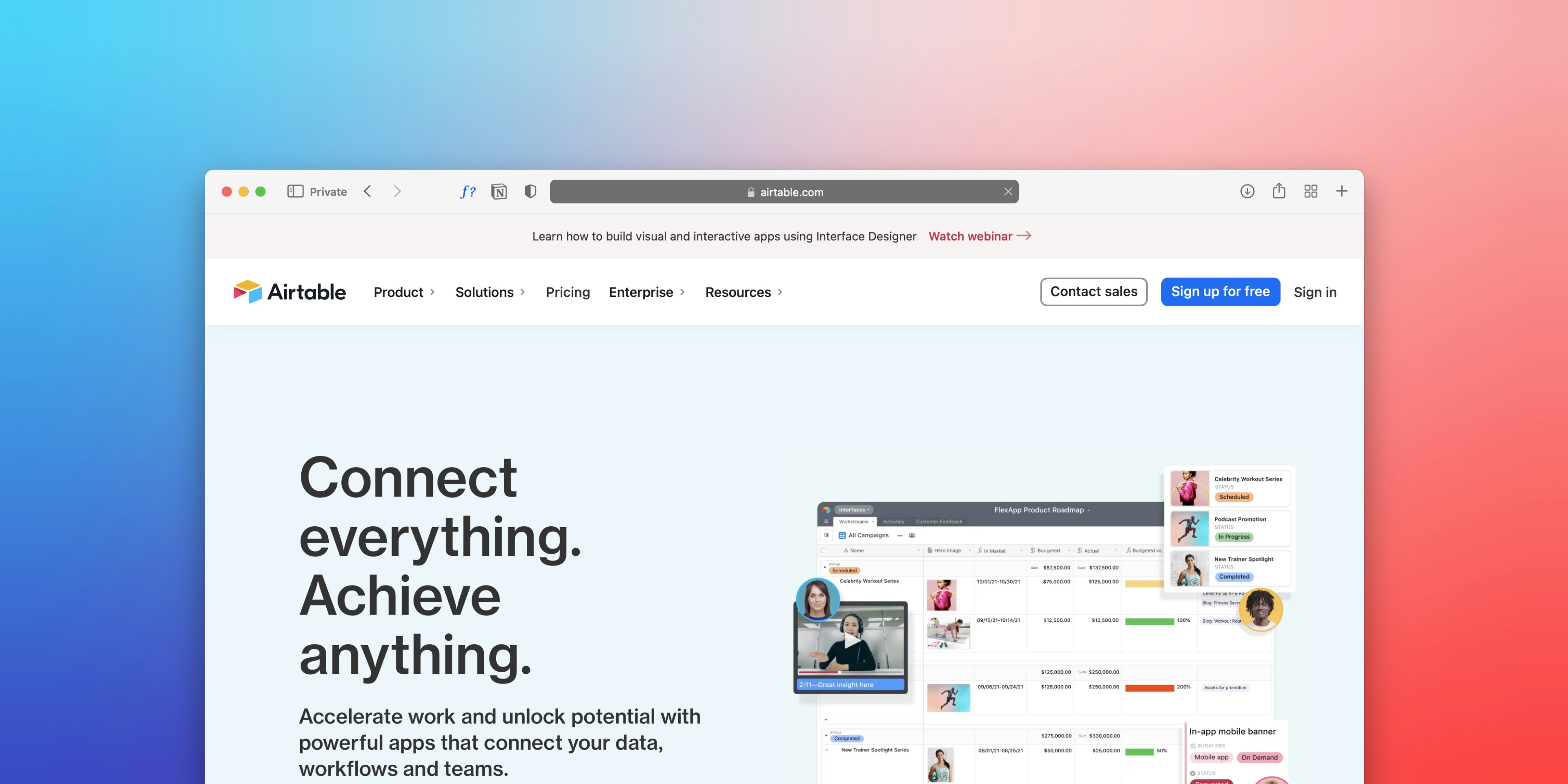-p-2000.png)


10 Reasons Why Responsive Web Design is Important

In today's world, where more than half of the world's people use mobile phones, a website's responsiveness is no longer an option but a necessity.
Responsive web design is becoming increasingly important to ensure that websites are optimized for all devices, whether desktop, laptop, or mobile.
This blog will discuss the importance of responsive web design and why it is more crucial than ever for websites. We will also explore the benefits of responsive design and provide best practices for designing responsive websites.
What is Responsive Design?
Responsive Web Design is a modern approach to website development that emphasizes the importance of adapting to the user's behavior and environment. This means taking into consideration factors such as the size of the screen, the platform, and the orientation of the device being used.
As mobile devices continue to gain popularity for internet browsing, responsive design has become increasingly vital in providing the optimal user experience.
According to Exploding Topics, 58.43% of website traffic comes from mobile devices, and a vast majority of internet users, which is 92.3%, access the internet through their mobile phones. Additionally, there are approximately 4.32 billion active mobile internet users worldwide.
A non-responsive website can have a severe impact on mobile users. Users may have to zoom in and out to view content, resulting in a poor user experience. Additionally, non-responsive sites are penalized by search engines, which can negatively affect your SEO ranking.
Benefits of Responsive Web Design
Now, to understand why responsive design is important, let us take a look at a few benefits of responsive web design:
Improved User Experience
One of the key benefits of responsive design is improving user experience. With a responsive website, users can enjoy an optimal viewing experience, as the site will adjust to fit any device's screen size and orientation. This allows for easy navigation and interaction with the website, regardless of the device used.
Better SEO Rankings
Another significant benefit of responsive web design is that it can improve SEO rankings. Search engines prefer websites that offer a seamless experience across all devices, and responsive design does just that. By improving your SEO ranking, your website can attract more traffic and increase its online visibility.
Increased Reach
With a responsive website, you can also cater to a broader audience, regardless of the device they use to access your site. This means that your content will be accessible to users on any screen size, leading to a better user experience and, ultimately, more engagement with your brand.
Easier Maintenance
Responsive design makes website maintenance easier by eliminating the need to manage multiple site versions for different devices. By making changes to a single website, you can save time and money and avoid the complexities of updating several sites.
Faster Loading Time
Incorporating responsive design principles into your website can result in faster loading times. This is because a responsive site requires only one URL and a set of HTML codes, so it doesn't have to redirect users to a different page based on their device. This streamlined approach can lead to better user engagement, as well as a reduction in bounce rates.
Competitive Advantage
In today's business world, a responsive website is crucial for success. Without it, you could easily risk falling behind competitors. A responsive website sets you apart, offering a seamless user experience, attracting visitors, retaining them for longer, and boosting conversions and sales.
Cost-Effective
Another key advantage of responsive web design is that it's cost-effective. Rather than having to create and maintain separate versions of a website for different devices, a responsive design allows you to manage a single site that adapts to all screens. This not only saves time and effort but also reduces expenses, making it a wise investment for any business or organization.
Increased Conversion Rates
Responsive web design can also significantly improve conversion rates. Ensuring a website is optimized for every device makes users more likely to engage with the content, leading to increased sales and conversions. In today's digital landscape, where consumers are more discerning than ever, having a website responsive to their needs can make all the difference.
Better Analytics
A responsive website also allows you to track website performance across all devices. This means you can collect and analyze data from different platforms, screen sizes, and orientations, providing valuable insights into user behavior. By understanding how visitors interact with your website, you can make data-driven decisions to improve the user experience and drive conversions.
Future Proofing
Responsive design is a forward-thinking approach that can help future-proof your website. By adapting to various devices and screen sizes, responsive design ensures that your site remains accessible and functional for users regardless of new technology that may be introduced down the line. This also ensures your website remains relevant and competitive in a constantly evolving digital landscape.
Best Practices for Responsive Design
Creating a website that looks and functions well across various devices is a crucial aspect of modern web design. With that in mind, let's explore some of the best practices for responsive design that can help you achieve a seamless user experience.
- Move from pixels and inches towards grids.
- Use media queries to adjust the layout based on screen size.
- Optimize images for faster loading times.
- Use a mobile-first approach to ensure your website is optimized for mobile devices.
- Use responsive typography to ensure that text is legible across all devices.
- Test your website on different devices and screen sizes.
- Use a responsive framework to speed up the development process.
- Use scalable vector graphics (SVGs) instead of raster images.
- Consider the placement of elements on the page for optimal user experience.
- Use a flexible grid system that can adapt to different screen sizes.
Reach out to our design experts!
Schedule a CallResponsive Web Design: A Must-Have Strategy for Modern Websites
By implementing responsive design best practices, developers, designers, and business owners can create a website that is not only visually appealing but also performs optimally across all devices. By doing so, businesses can achieve their goals, stay ahead of the competition, and provide an excellent user experience to their customers.
If you're looking for help with implementing responsive design or have any questions, feel free to reach out to us at Seattle New Media. Our team of experts is always available to assist you and ensure that your website performs flawlessly on all devices.

Reach out to our design experts!
Schedule a CallReach out to our design experts!
Schedule a CallFAQ
Editorial Team
Publisher
In today's world, where more than half of the world's people use mobile phones, a website's responsiveness is no longer an option but a necessity.
Responsive web design is becoming increasingly important to ensure that websites are optimized for all devices, whether desktop, laptop, or mobile.
This blog will discuss the importance of responsive web design and why it is more crucial than ever for websites. We will also explore the benefits of responsive design and provide best practices for designing responsive websites.
What is Responsive Design?
Responsive Web Design is a modern approach to website development that emphasizes the importance of adapting to the user's behavior and environment. This means taking into consideration factors such as the size of the screen, the platform, and the orientation of the device being used.
As mobile devices continue to gain popularity for internet browsing, responsive design has become increasingly vital in providing the optimal user experience.
According to Exploding Topics, 58.43% of website traffic comes from mobile devices, and a vast majority of internet users, which is 92.3%, access the internet through their mobile phones. Additionally, there are approximately 4.32 billion active mobile internet users worldwide.
A non-responsive website can have a severe impact on mobile users. Users may have to zoom in and out to view content, resulting in a poor user experience. Additionally, non-responsive sites are penalized by search engines, which can negatively affect your SEO ranking.
Benefits of Responsive Web Design
Now, to understand why responsive design is important, let us take a look at a few benefits of responsive web design:
Improved User Experience
One of the key benefits of responsive design is improving user experience. With a responsive website, users can enjoy an optimal viewing experience, as the site will adjust to fit any device's screen size and orientation. This allows for easy navigation and interaction with the website, regardless of the device used.
Better SEO Rankings
Another significant benefit of responsive web design is that it can improve SEO rankings. Search engines prefer websites that offer a seamless experience across all devices, and responsive design does just that. By improving your SEO ranking, your website can attract more traffic and increase its online visibility.
Increased Reach
With a responsive website, you can also cater to a broader audience, regardless of the device they use to access your site. This means that your content will be accessible to users on any screen size, leading to a better user experience and, ultimately, more engagement with your brand.
Easier Maintenance
Responsive design makes website maintenance easier by eliminating the need to manage multiple site versions for different devices. By making changes to a single website, you can save time and money and avoid the complexities of updating several sites.
Faster Loading Time
Incorporating responsive design principles into your website can result in faster loading times. This is because a responsive site requires only one URL and a set of HTML codes, so it doesn't have to redirect users to a different page based on their device. This streamlined approach can lead to better user engagement, as well as a reduction in bounce rates.
Competitive Advantage
In today's business world, a responsive website is crucial for success. Without it, you could easily risk falling behind competitors. A responsive website sets you apart, offering a seamless user experience, attracting visitors, retaining them for longer, and boosting conversions and sales.
Cost-Effective
Another key advantage of responsive web design is that it's cost-effective. Rather than having to create and maintain separate versions of a website for different devices, a responsive design allows you to manage a single site that adapts to all screens. This not only saves time and effort but also reduces expenses, making it a wise investment for any business or organization.
Increased Conversion Rates
Responsive web design can also significantly improve conversion rates. Ensuring a website is optimized for every device makes users more likely to engage with the content, leading to increased sales and conversions. In today's digital landscape, where consumers are more discerning than ever, having a website responsive to their needs can make all the difference.
Better Analytics
A responsive website also allows you to track website performance across all devices. This means you can collect and analyze data from different platforms, screen sizes, and orientations, providing valuable insights into user behavior. By understanding how visitors interact with your website, you can make data-driven decisions to improve the user experience and drive conversions.
Future Proofing
Responsive design is a forward-thinking approach that can help future-proof your website. By adapting to various devices and screen sizes, responsive design ensures that your site remains accessible and functional for users regardless of new technology that may be introduced down the line. This also ensures your website remains relevant and competitive in a constantly evolving digital landscape.
Best Practices for Responsive Design
Creating a website that looks and functions well across various devices is a crucial aspect of modern web design. With that in mind, let's explore some of the best practices for responsive design that can help you achieve a seamless user experience.
- Move from pixels and inches towards grids.
- Use media queries to adjust the layout based on screen size.
- Optimize images for faster loading times.
- Use a mobile-first approach to ensure your website is optimized for mobile devices.
- Use responsive typography to ensure that text is legible across all devices.
- Test your website on different devices and screen sizes.
- Use a responsive framework to speed up the development process.
- Use scalable vector graphics (SVGs) instead of raster images.
- Consider the placement of elements on the page for optimal user experience.
- Use a flexible grid system that can adapt to different screen sizes.
Reach out to our design experts!
Schedule a CallResponsive Web Design: A Must-Have Strategy for Modern Websites
By implementing responsive design best practices, developers, designers, and business owners can create a website that is not only visually appealing but also performs optimally across all devices. By doing so, businesses can achieve their goals, stay ahead of the competition, and provide an excellent user experience to their customers.
If you're looking for help with implementing responsive design or have any questions, feel free to reach out to us at Seattle New Media. Our team of experts is always available to assist you and ensure that your website performs flawlessly on all devices.
Reach out to our design experts!
Button TextFAQ
Editorial Team
Publisher




Hi, I'm Mike!
If you are enjoying the article, feel free to subscribe to our monthly newsletter.
If you have any project requirements, please contact us.







.png)









